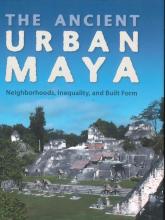The Ancient Urban Maya: Neighborhoods, Inequality, and Built Form
Book summary:
Ancient cities were complex, political, and economic entities, but they also suffered from inequality, poor sanitation, and disease--often more than rural areas. Offering a balanced understanding of urbanism and a synthesis of previous research, Scott Hutson examines ancient Maya cities, including Chunchucmil, Tikal, and Dzibilchaltun, to determine why people chose to live in these urban environments. He argues that despite the hazards of urban life, Maya cities continued to lure residents for many centuries. With built forms that welcomed crowds, neighborhoods that offered domestic comforts, marketplaces that facilitated the exchange of goods and ideas, and opportunities to expand social networks and capital, Maya cities were used in familiar ways.
Publisher:
University Press of Florida
Praise:
Quote:
Important and timely, Hutson's analysis of Maya cities in their constituent neighborhoods marks a new milestone in the study of Maya urbanism.
Credit:
Cynthia Robin, author of "Everyday Life Matters: Maya Farmers at Chan"
Quote:
Hutson masterfully demonstrates the omnipresence of cities among the ancient Maya and animates their lost urban lifeways. He not only convincingly places the ancient Maya within an urban framework, but also engages in theoretical discussions about spatial forms and social relationships that are of interest to all scholars researching ancient and modern cities.
Credit:
Arlen F. Chase, coeditor of "Mesoamerican Elites"
Quote:
The best perspective, to date, on the complexities of ancient "urban " life and life decisions by the prehistoric Maya
Credit:
Fred Valdez Jr., coeditor of "Ancient Maya Commoners"
A&S department affiliation:
Book URL:
https://www.amazon.com/Ancient-Urban-Maya-Neighborhoods-Inequality/dp/0813062764

